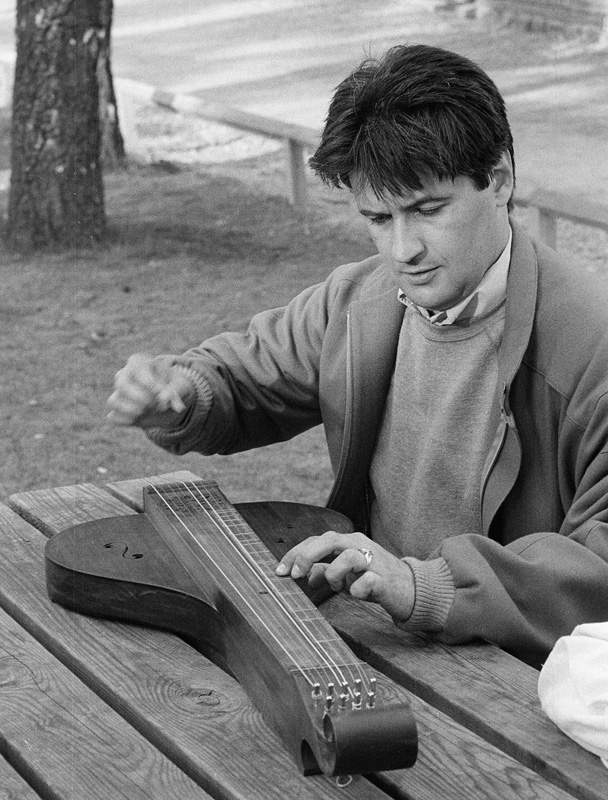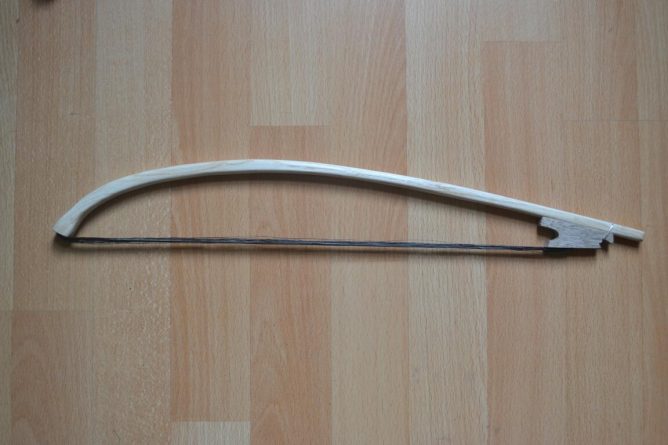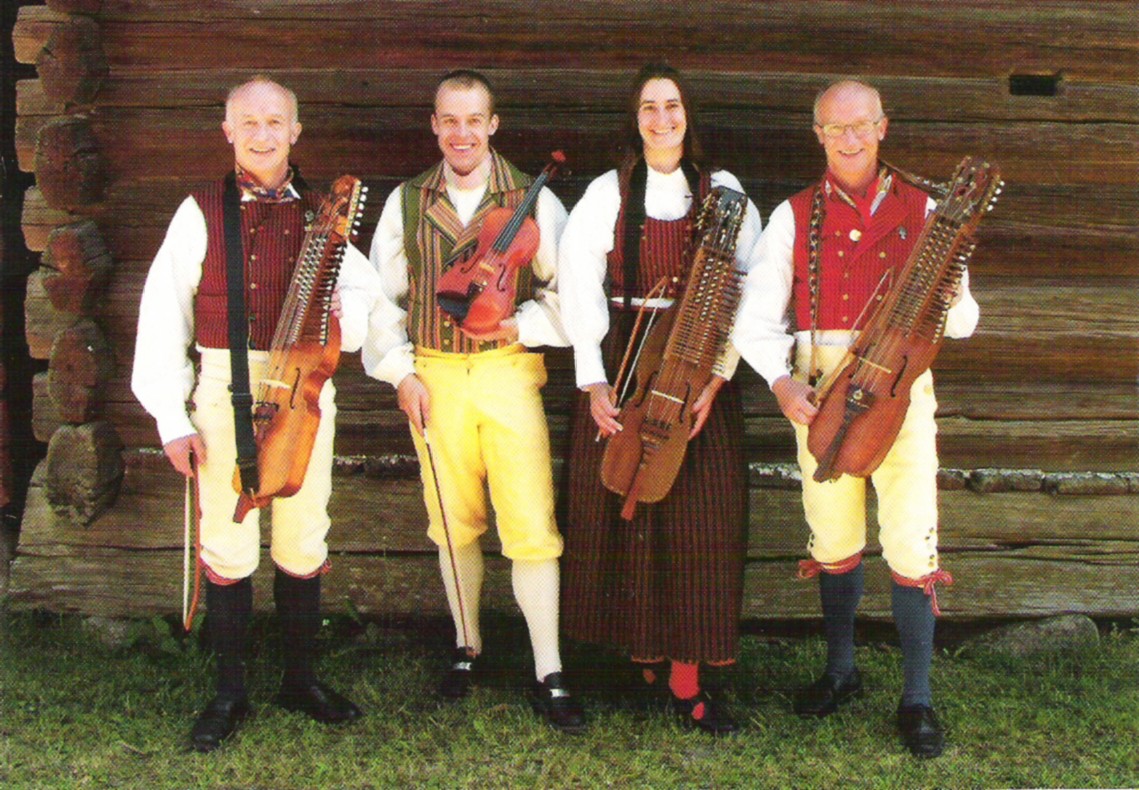I first learned about nyckelharpas when I was on a tour of Finnish and Swedish folk and country music festivals that I played in 1981. The gentleman I stayed with in Solna, a suburb of Stockholm, was Anders Eklundh, who had been awarded the distinction of
riksspelman for his playing of nyckelharpa and other traditional Swedish folk instruments.
In Sweden they have the tradition of having traditional musicians play for a jury, and if they're good enough they're designated as a
riksspelman, or "musician of the realm."
Here's a photo of Anders taken around the time I knew him:
 Anders Eklundh
Anders Eklundh
Here's a photo of him playing the
hummel, which is a diatonically fretted zither related to the American mountain dulcimer (which is how he and I connected.)
 Playing the hummel
Playing the hummel
Anders also played guitar, harmonica and an older, archaic version of the nyckelharpa called the silverharpa. I never did figure out the difference between the two, because they looked, sounded and played just the same as the nyckelharpas, so far as I could tell.
One thing I noticed about those videos is that the nyckelharpa player in both of them was using a bow with a violin frog on it to maintain the bow's tension. That's understandable if the player is a touring musician who travels in and out of different climatic zones. But the traditional nyckelharpa is very close to the bows that you see in painting and sculptures of medieval musicians: with a pronounced arch to them and no frog.
Instead, the bow tension is maintained by the player's thumb on his right hand.

˙˙˙
The horsehair on Anders' nyckelharpa bows was actually kind of slack, and he changed tension on it with his thumb for musical effect when needed, much as guitarists will play closer or farther from the bridge, or mute with their palm just to get different tones and textures.
One day Anders decided to give me a nyckelharpa lesson. The nyckelharpa is most often played seated in a kind of awkward position, with the instrument held out at about a 45˚ angle from the player's body.

˙˙˙
Anyway, he and I got set up, and he handed me the bow, and told me it would be difficult at first to deal with it. Instead, I took right to the bowing technique he was playing right away, which astonished him: "That NEVER happens! NOBODY gets the bowing first!"
But I did. Keeping time and playing melodies on the nyckelharpa, though, I found more difficult. A large part of the problem for me as an American folk musician is that Swedish folk music has a completely different pulse to it. When I was in Finland I played along with the Finns with no problems, but Swedish music proved to be more rhythmically challenging for me.
And even though with my fair hair and fair complexion I was usually taken as either a Finn or a Swede in each of those countries, I'm mostly of Scottish and British Isles ancestry, without any Scandinavian heritage more recent than the Viking days. So as much as I liked Swedish music, it doesn't speak to me in quite the same way.
That's the reason I don't have two or three of them, Andy! If I lived in Sweden I undoubtedly would, but I live in the American equivalent - Alaska. Not too many guys in knee britches and double breasted vests playing them here.

˙˙˙
Hope that makes sense.
Wade Hampton Miller